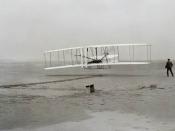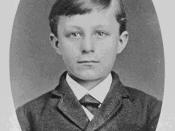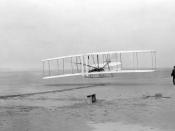'A bird is an instrument working according to
mathematical law... which it is within
the capacity of man to reproduce.'
-Leonardo da Vinci
The Wright Brothers may have invented the first airplane, made the first successful flight, and gone down in history as aviation pioneers, but the theory of flight goes back far before those boys were born.
As early as the 16th century, Leonardo da Vinci had drawn things resembling a helicopter. Without knowing about aerodynamics, attempts were doomed to fail.
Aerodynamics: (Definition of) is the study of the flow of air and other gases and of the forces acting on bodies moving through the gases. It is a branch of fluid mechanics. Aerodynamics is mainly used to study flight. Isaac Newton developed the laws of motion in the 17th century. These laws say that effects of forces act on bodies in motion or at rest. Which means that natural forces act on an object whether it is still or moving.
Newton also developed the concept of fluid friction, we call it viscosity, (Definition of) the resistance of air or any other fluid to motion, whether its own or that of a body moving through it. Daniel Bernoulli, used Newton's laws of motion to develop the principle that 'the velocity of a fluid is related to the pressure within it: the faster the fluid flow, the lower the pressure.'(Http://109.364.090.56) These concepts formed the basis for more studies.
The first powered, airplane was Orville and Wilbur Wright's flying machine. It used the same basic principles of flight as today's jets. The wings,(airfoils) of the 1903 Wright Flyer resembled a box kite. A smaller pair of wings, (canard) was located in front of the main wings allowing the aircraft to climb or descend. The canard performed the same function as...


